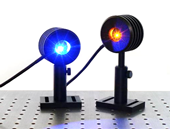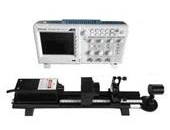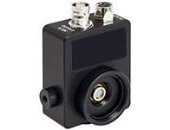In recent years, the development of the rotary hearth furnace direct reduction process of broad interest, which treats a wide range of objects, showing a huge advantage, especially in dealing with the solid waste generated by iron and steel plant, zinc and lead-containing dust and dust and mud. Great progress has also been made in the treatment of complex and difficult-to-treat mines that are difficult to handle in blast furnaces, such as the comprehensive recovery of iron and vanadium Ti0 2 from vanadium- titanium magnetite. Rotary hearth furnace main process to: direct reduction of carbon-containing pellet at a high temperature of 1200 ~ 1400 ℃ obtain pellets must metallization ratio after reduction and further processing of the metal pellets depending on the purpose. The cold-consolidated carbon-containing pellets are used as the main raw material for the direct reduction of the rotary hearth furnace. In the production process of the rotary hearth furnace, the transportation, fabric, reduction, discharge and other processes are carried out, so the performance of various aspects affects the production of the rotary hearth furnace. Smooth and efficient. In terms of the binder of the cold-bonded pellets, the syrup has strong adhesion, a wide source, moderate price, and the main components are carbon and oxygen. The reaction in the rotary hearth furnace does not produce polluting gas, and the impurities are less after the reaction. It can provide partial reducing agent and heat, so it is the preferred binder for the treatment of vanadium-titanium magnetite in rotary hearth furnace. Paper syrup as a binder, and a vanadium-titanium magnetite powder as raw material coal, the ratio of different binders, the carbon-containing pellets of the cold formability of consolidation effect under a molding pressure and the amount of water added. First, the test (1) Test materials The test ore powder is a vanadium-titanium magnetite fine powder supplied by a plant in Panxi, Sichuan. The content (mass fraction, %) of each component in the ore powder is as follows: TFe 56.75, FeO 25.55, Fe 2 0 3 52.68, TiO 2 12.18 , V 2 0 5 0.67, Si0 2 1.98, CaO 0.62, MgO 2.93, A1 2 0 3 2.77, S 0.1, P 0.015. The fixed carbon content of coal is 82.04%, the volatile content is 6.58%, and the ash content is 9.88%. The particle size distribution and bulk density of mineral powder and coal powder are shown in Table 1. Table 1 Particle size composition and bulk density of pulverized coal and mineral powder raw material Particle size composition /% Bulk density / (g·cm -3 ) +0.40mm 0.15~0.40mm 0.125~0.15mm 0.098~0.125mm 0.074~0.098mm -0.074mm Mineral powder Pulverized coal 0.65 21.05 20.85 23.25 52.80 15.20 22.10 17.85 2.30 12.70 1.30 9.90 2.78 0.97 (2) Research methods The test process includes raw material drying, batching, mixing, pelletizing, drying, testing and other aspects. The drying equipment uses a 101-lAB type electric blast drying oven, the drying temperature of the raw material is 200 ° C, and the drying time is 120 min. The ratio of the mineral powder to the pulverized coal (mass ratio) is: m (mineral powder)..m (pulverized coal)=5..1. After the raw materials are uniformly mixed, a certain proportion of binder and distilled water are added according to the orthogonal table, and the mixture is uniformly stirred. The uniformly mixed raw materials are cold-consolidated by a roll ball press, and the forming pressure is set according to an orthogonal table. The main technical parameters of the roller ball press are: compact size 40.0mm × 31.00mm × 20mm, compact volume 14cm 3 , pressure roller width 50mm, maximum speed 20r / min, maximum hydraulic pressure 20MPa. The dried ball was measured for pellet strength using a DL-III type intelligent particle strength meter, and the measuring range of the measuring instrument was 0 to 5000N. Second, the results and analysis (1) Test design and results After the carbonaceous pellets are formed by cold consolidation, they are placed in a dry box for drying. The drying conditions are 300 ° C, the drying time is 30 min, and after drying, 5 balls are measured for compressive strength, and then averaged. As the compressive strength of the pellets. According to the orthogonal test principle, the factor level design is shown in Table 2, and the test results are shown in Table 3. Table 2 Orthogonal test factor level Factor level Binder content (factor A) /% Molding pressure (factor B) / MPa Water addition amount (factor C) /% 1 2 3 4 4 5 6 7 10 12 15 18 1 2 3 4 Table 3 Test plan and results Test number Binder content (factor A)/% Molding pressure (factor B) / MPa Water addition amount (factor C)/% Dry ball compressive strength (P)/N 1 2 3 4 5 6 7 8 9 10 11 12 13 14 15 16 4 5 6 7 4 5 6 7 4 5 6 7 4 5 6 7 10 15 12 18 18 12 15 10 12 18 10 15 15 10 18 12 3 1 2 4 2 4 3 1 1 3 4 2 4 2 1 3 326 1631 1902 606 732 418 1776 838 473 2011 437 1082 417 1218 1876 737 The test results of Table 3 are analyzed. S Al is the sum of the corresponding test results when the factor A takes the first level, S A2 is the sum of the corresponding test results when the factor A takes the second level, and S A3 is the factor A. The sum of the corresponding test results at the three levels, S A4 represents the sum of the corresponding test results when the factor A takes the fourth level, namely: S Al =P 1 +P 5 +P 9 +P 13 =326+732+473+417=1948 (1) S A2 =P 2 +P 6 +P 10 +P 14 =1631+418+2011+1218=5278 (2) S A3 =P 3 +P 7 +P 11 +P 15 =1902+1776+437+1876=5991 (3) S A4 =P 4 +P 8 +P 12 +P 16 =606+838+1082+737=3263 (4) Divide S A1 , S A2 , S A3 , and S A4 by 4 to get: In equations (5) to (8) Table 4 Orthogonal analysis of test results project Factor A Factor B Factor C S1 S2 S3 S4 R 1948 5278 5991 3263 487 1320 1498 816 1011 2819 3530 4906 5225 705 883 1227 1306 601 4818 4934 4850 1878 1205 1234 1213 470 764 In the orthogonal experiment, if a certain level factor has a major influence on the result, the quantitative relationship should be expressed as the comprehensive average of the indicators under each level of the factor. R A =1498-487=1011 (9) R B =1306-705=601 (10) R C =1234-470=764 (11) From the formula (9) to (11), among the three factors A, B and C, the main factors affecting the compressive strength of the pellet are the A binder content, followed by the factor C moisture addition amount, and the factor B molding pressure on the ball. The compressive strength of the mass is relatively small. Therefore, in order to obtain a pellet with a higher compressive strength, the first choice is to select a suitable binder ratio. (2) The influence of various factors on the test results In order to more clearly describe the influence of various factors on the compressive strength of pellets after forming, the factors of each factor and the comprehensive average compressive strength under the factor are plotted, as shown in Fig. 1. It can be seen from Fig. 1 that the factors have different effects on the compressive strength of the cold-solidified pellets. The compressive strength increases first and then decreases with the increase of the binder loading amount; the trend of increasing with the molding pressure is always increasing. However, the increase rate is getting smaller and smaller; when the water addition amount is below 3%, the compressive strength of the pellets is not greatly affected, and the amount of water added is continuously increased, and the strength of the pellets is drastically decreased. The analysis of Table 2 and Figure 1 can determine that the optimal level combination is A3B4C2, that is, the binder content is 6%, the molding pressure is 18 MPa, and the cold-bonded pellets have the highest compressive strength when the moisture content is 2%. This combination was not included in the 16 tests conducted, and therefore, the A3B4C2 level combination test was continued, and the average compressive strength of the pellet obtained after the test was 2723N. This result is higher than the maximum value in the test and, therefore, is the optimal combination under the test conditions. Third, the conclusion (1) The effects of binder addition, molding pressure and moisture addition on the compressive strength of cold-bonded pellets were analyzed by orthogonal test. The test results showed that the binder was added to the pellets. The compressive strength has the greatest influence, followed by the amount of moisture added and the molding pressure. (2) The influence of the binder on the compressive strength of the pellet after molding is first increased and then decreased. When adding 6% syrup, the relationship between the molding pressure and the compressive strength of the pellet after molding is increased with the molding pressure. The compressive strength of the pellets is increasing continuously; when the amount of water added is small, the strength of the pellets is not greatly affected. When the content exceeds 3%, the pellet strength decreases sharply with the increase of moisture content. (3) The optimum combination A3B4C2 was obtained by the orthogonal test method, that is, the binder content was 6%, the molding pressure was 18 MPa, and the moisture addition amount was 2%. Under the process conditions, the average compressive strength of the pellets can reach 2723N. CNI as a world`s leading designer and manufacturer of Laser system, fully understood your actual demands of laser measurement and analytical capability, designed several laser measurement which are specially tailored to you. Based on the understanding of practical applications, advanced technology and precise selection of devices, CNI dedicated to helping you find the best choice which can not only meet your measurement requirements, but also offer the most competitive price. The modular options we offered made it easier for you to extend the configuration when your demands increased or changed in the future, which improved the cost performance.
Laser Power&Stability Measurement
Laser Wavelength Measurement
Laser Power Meter is used to measure laser power and power stability. CNI provides customers thermoelectric and photoelectric power meters...
Coherence Length Measurement
Laser Measurement,Laser Safety,Laser Slope Measurement,Laser Distance Measurement Changchun New Industries Optoelectronics Technology Co., Ltd. , https://www.opticsqm.com![]() (5)
(5) ![]() (6)
(6) ![]() (7)
(7) ![]() (8)
(8) ![]() It indicates that the molding pressure and the amount of moisture added are in a comprehensive average sense, and the amount of binder added is the ball-forming compressive strength at 4%, 5%, 6%, and 7%, respectively. For factor B and factor C, the same method is used for calculation. The calculation results are shown in Table 4.
It indicates that the molding pressure and the amount of moisture added are in a comprehensive average sense, and the amount of binder added is the ball-forming compressive strength at 4%, 5%, 6%, and 7%, respectively. For factor B and factor C, the same method is used for calculation. The calculation results are shown in Table 4. ![]()
![]()
![]()
![]()
![]() The difference between the two is large, and vice versa
The difference between the two is large, and vice versa ![]() The difference between the two is small, indicating that the factor is not the main factor, according to the table
The difference between the two is small, indicating that the factor is not the main factor, according to the table ![]() Value, calculate the difference between the factors A, B, C are:
Value, calculate the difference between the factors A, B, C are: 
In addition, we also provide data testing and customized services of laser measurement protection system, which are based on customer`s needs.


Fiber optic Spectrometer is used to measure wavelength, line width of laser and common light source, also to measure fluorescence, Raman, plasma spectrum...


Laser Pulse Measurement
Longitudinal Mode Measurement
High-speed photodetector combined with oscilloscope can monitor ultra-fast Pulsed Laser and measure pulse duration, frequency, period and other parameters of lasers...
F-P scanning interferometer is used for longitudinal mode measurement. Laser longitudinal mode refers to the axial distribution of the light field along to its direction of propagation...


Noise Measurement
Using Michelson interferometer to split the laser beam in two. When the two light beams recombine, they interfere and form interference fringes in the focal plane.
Silicon photodetector is used to measure noise, the oscilloscope displays noise signals. According to the noise signals, we can see if the laser has good transient stability...